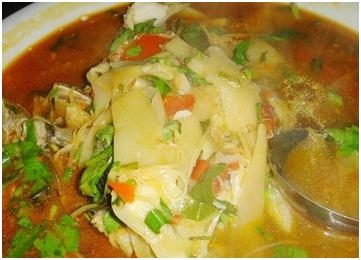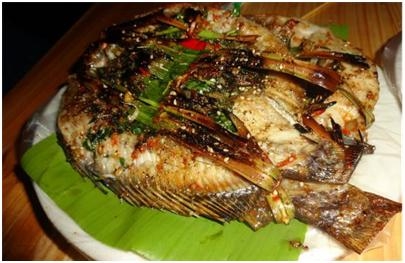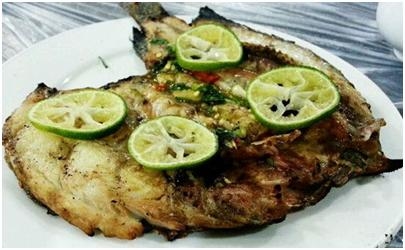MANA 420代做、代寫(xiě)Java/Python編程語(yǔ)言
MANA 420代做、代寫(xiě)Java/Python編程語(yǔ)言
時(shí)間:2024-04-05 來(lái)源: 作者: 我要糾錯(cuò)
Final Research Report: Overview
Management Research for Decision Making
MANA 420 – Winter 2024 – Section C
Instructor: Steve Granger
The purpose of this project is for students to conduct research and write a technical report
regarding the results of their research that is accessible and interesting to management and
administrative practitioners. Students will use the skills built in previous course assignments to
(a) build a framework based on past literature, and write hypotheses, (b) analyze data using a
statistical package, (c) interpret the results of their data analyses, and (d) communicate their
results in a written report that also discusses the meaning and implications of their findings. The
final research report is the capstone of this course, and it is worth 30% of the final grade.
DUE DATE: 11:45am, April 9, via Moodle
NOTE: Please follow APA reporting standards and submit assignment as a Word document.
Learning Objectives
• Apply core concepts in research methods.
• Position one’s own research in light of existing research on the same topic.
• Communicate the purpose, methodology, results, and implications of one’s own study in
a manner that is credible to an informed audience and to business practitioners.
This is an individual assignment
Throughout the term, you have been helpful to your teammates and perhaps others in the class,
as they may have been to you. Now this is the time for each individual to show what they have
learned. Please work individually.
For this assignment, you need to:
1. Develop two bivariate hypotheses. Use your assigned topic and the relevant data set (from
Survey A OR Survey B) to pick two other variables of interest (NOTE: one must be measured on
a nominal or ordinal scale of measurement, the other must be measured on an interval or ratio
scale of measurement). Develop your two bivariate hypotheses based on the chosen variables.
Note that your topic variable must be in each hypothesis. It can be positioned as either an
independent or a dependent variable. Also note that you must use the same data set for all
hypotheses. Use the skills acquired in Assignments 1 and 3.
2. Analyze data using JASP. Pick the relevant data set to your hypotheses (either Survey A or
Survey B) and analyze the data to test your hypotheses. Use the techniques that were learned for
Assignments 2 and 3.
2
3. Produce a written report that highlights your topic, hypotheses, and project findings.
Your paper should be double-spaced with 12-point font and 1-inch margins. It should adhere to
APA guidelines and the following order of sections (details about what needs to be included in
each section are found in the Details section below):
Order of Sections
Title Page and Abstract
Introduction (labelled with the name of your project)
Method
Results (including Tables and Figures)
Discussion
References
Appendices (including annotated JASP output)
Your written report should be no more than 1400 words—excluding the abstract, the
reference list, and the appendices (there will be a 1% penalty per 100 words over the limit).
Make sure you check the Report Evaluation and Details sections below to ensure that you have
included all the required parts of the report.
4. Submit a Word copy of your report via Moodle. As per the course policy stated on the
syllabus, late submissions will receive a penalty of 5% per day.
An important reminder about Academic Integrity
The most common offence under the Academic Code of Conduct is plagiarism which the Code
defines as “the presentation of the work of another person as one’s own or without proper
acknowledgement.” This could be material copied word for word from books, journals, internet
sites, professor’s course notes, etc. It could be material that is paraphrased but closely resembles
the original source. It could be the work of a fellow student, for example, an answer on a quiz, data
for a lab report, a paper or assignment completed by another student. It might be a paper
purchased through one of the many available sources. Plagiarism does not refer to words alone –
it can also refer to copying images, graphs, tables, and ideas…
(Source: http://www.concordia.ca/conduct/academic-integrity/plagiarism.html)
Do not plagiarize your report or engage in any other academic misconduct while working
on this class project.
3
Report Evaluation
Max
Abstract: Summarizes the entire report (purpose, method, results, key implications) 5
Introduction: Appropriate opening sentences and description of significance of
research; Define your chosen variables; Good use of supporting literature; Clear and
logical reasoning for all hypotheses; Proper statements of hypotheses;
20
Method: Clear description of (a) participants, (b) study procedure, and (c) measures 15
Results: Appropriate statistical analyses; Correct and readable descriptions of
findings; Well-presented appendix
25
Discussion: Conclusions drawn about each hypothesis with discussion of all findings
(expected and unexpected); Discussion of limitations of the study (e.g., internal and
external validity) and suggestions for future research; Useful practical applications;
Appropriate closing sentences
25
Style: Includes all required sections; Proper citations and references; Quality and
clarity of writing; Coherence and flow of report; Respect for word limit
10
Total 100
4
Final Research Report: Details About Each Section of the Research Paper
TITLE PAGE & ABSTRACT: Includes the title of the paper, name of the author, and the
submission date. Your title should be brief, but descriptive and appealing to the reader. The
abstract summarizes the entire paper in about 50-100 words.
INTRODUCTION (Instead of using the word “introduction” as a title, simply repeat the title of
the paper.)
• Attracts readers’ attention and motivates them to read the paper.
• States both the broad research issues and purpose of the study.
• Defines your focal variables.
• Reviews and integrates past literature that is relevant to the research hypotheses, with
appropriate citations (approximately 5-6 articles should be appropriate for this paper).
• Describes the theoretical framework and clearly states the specific research hypotheses
• The introduction can have sub-headings to help orient the reader. These sub-headings are
best labelled with the major variable under consideration in the sub-section.
• The introduction is likely to be about 500 words/2-3 pages in this course.
METHOD
• Describes the sample that participated in the study (how they were recruited, the response
rate, their demographic characteristics, etc.).
• Describes the research design and the procedures that were followed during the study.
• Describes how each variable mentioned in the hypotheses was measured and cites
published scales where appropriate (internal consistencies of the multi-item scales should
be reported in this section of the paper if appropriate).
• The method section should have subheadings corresponding to the components described
above: participants, procedure, and measures.
• The method section of the research paper in this course is typically about 250 words/1-2
pages.
RESULTS
• Presents the results of descriptive data analyses, including means for variables measured
on an interval or ratio scale.
• Presents the results of statistical analyses that were conducted to test the hypotheses.
• Clearly states whether or not the hypotheses were supported (the explanation of the
results should not appear here, but in the Discussion section).
• The results section should be written in prose format, with statistical values inserted in
parentheses as needed. Help the reader by mentioning the variables in the hypothesis
(rather than just saying that Hypothesis #1 was or was not supported).
• Tables can be used to present numerical information in a concise format, but avoid
duplicating information in a table that is already mentioned in the text. Be sure to number
each table, give it a name, and refer to it explicitly in the text. DO NOT copy JASP tables
into your paper (JASP tables are for the appendix only for the instructor to review if your
analyses have been done correctly).
• Excluding any tables, the results section should be about 250 words/1-2 pages.
5
DISCUSSION
• Reviews the purpose of the study.
• Re-states whether or not each hypothesis was supported and discusses the meaning of the
result of each hypothesis test. This is the place to explain why the results did or did not
support the hypotheses.
• States whether or not the results of this study are consistent with past research discussed
in the literature review section of the Introduction.
• Discusses the strengths and limitations of the research (i.e., internal and external validity)
• Discusses directions for future research
• Discusses business or administrative applications of the research.
• The discussion section is likely to be about 500 words/2-3 pages.
REFERENCES
• This section lists all the sources that are cited in the body of the paper. Every article,
book, paper, or website to which you refer in your paper should be listed in the reference
list. References should be listed in alphabetical order, based on the family name of the
first author. Instructions for formatting references according to APA can be found here:
http://library.concordia.ca/help/howto/citations.html#apa
Topic Choices for Project
NOTE: Each student must submit a list of preferred topics to the instructor. You should rank
your top 6 (3 from each survey) and bottom 2 (1 from each survey) topics. Final topics will be
assigned to students by the instructor the class after the final project is explained.
Survey A Survey B
• Work Overload
• Academic Procrastination
• Satisfaction with university
• Anticipated Work-to-Family Conflict
• Career Flexibility
• Social Support
• Leadership Aspirations
• Perceived Stress
• Core self-evaluations
• Affective commitment
• Supervisor support
• Availability expectations
• Supervisor fairness
• Work meaningfulness
• Thriving
• Loneliness
• Conflict
• Turnover intentions
• Leadership aspirations
6
Final Research Report: Commonly Asked Questions and Answers
Q: When I find articles, how can I choose the most appropriate ones?
• Focus on those that help you to explain your hypotheses.
• Articles typically have more variables than the ones you need; just focus on the relevant
aspect of the article.
• Articles with empirical findings are more applicable for your purposes than those that
theorize without data.
Q: How will I know if my hypotheses are appropriate?
• First, make sure they are logical AND you have the data to test them. Please doublecheck your coding key/list of topics in your data set (either A or B) for what variables are
available to you.
• Beyond the broad topic area, you should develop the hypotheses that are most interesting
(and make most sense) to you.
Q: JASP tells me my variable is nominal, although I think it is interval (small yellow ruler). Am I
wrong?
• Sometimes JASP mislabels variables when it imports data from Excel. In such cases,
please trust yourself based on what we have learned in class and make changes to the
correct variable type.
Q: What if my measure of a variable has low internal consistency?
• Ensure that you have dealt appropriately with reverse-scaled questions.
• Use the scale as is and address this measurement problem as a limitation to the research.
Q: What if my hypotheses do not turn out as I expected?
• Consider that there may be methodological problems or that your rationale may have
been incorrect.
• Discuss both possibilities.
請(qǐng)加QQ:99515681 郵箱:99515681@qq.com WX:codinghelp
標(biāo)簽:
無(wú)相關(guān)信息















